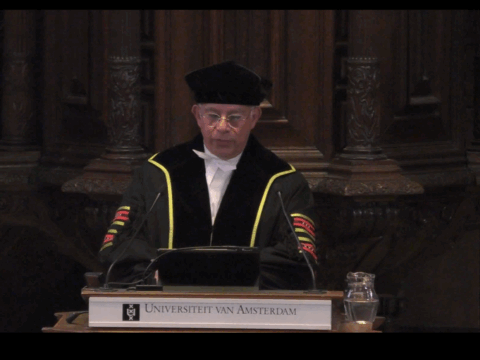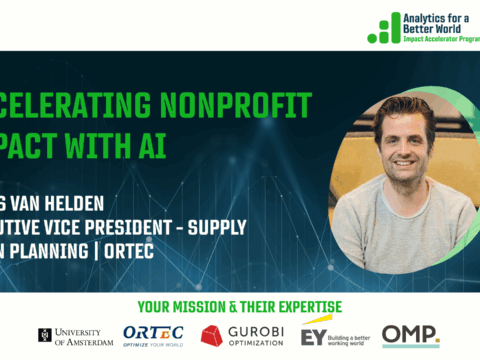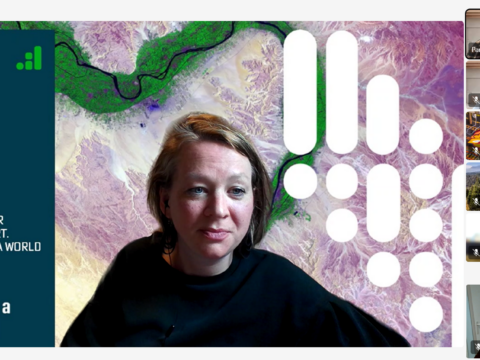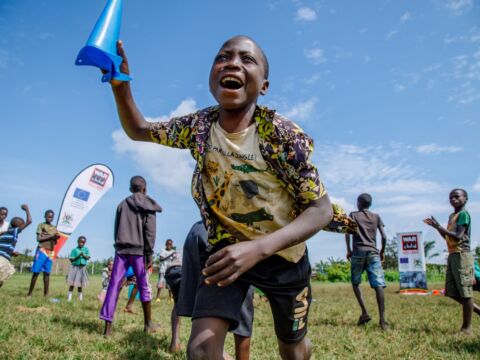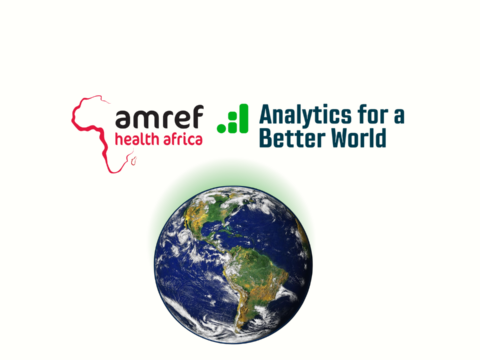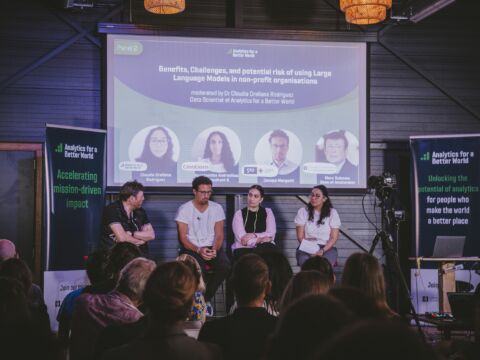Irina Ionita
See profileParvathy Krishnan
See profileMapping a Healthier Tomorrow: How a Data-Driven Thesis is Transforming Stroke Care
Merel Bonewit, the 2024 Winner of the George Molenkamp Sustainability Thesis Award
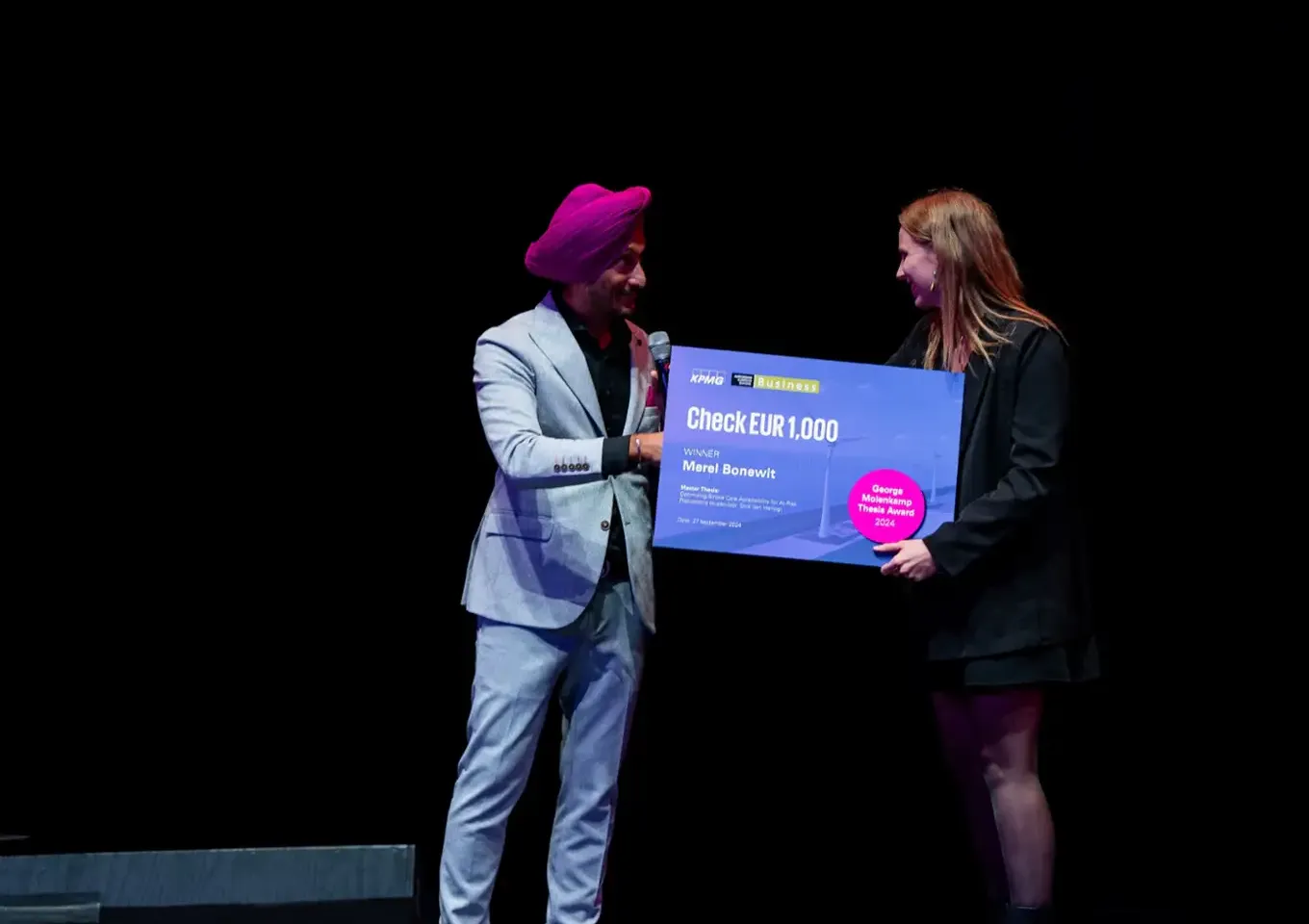
Merel Bonewit, the 2024 Winner of the George Molenkamp Sustainability Thesis Award – Irina Ionita | Parvathy Krishnan | What if a simple change in where we build hospitals could save thousands of lives? This is the kind of bold question that propelled Merel Bonewit, a recent graduate in Data Science & Business Analytics, into […]
What if a simple change in where we build hospitals could save thousands of lives?
This is the kind of bold question that propelled Merel Bonewit, a recent graduate in Data Science & Business Analytics, into the spotlight as the winner of the 2024 George Molenkamp Sustainability Thesis Award – a prize that recognizes research with the power to shape a more sustainable, eq%uitable world.
From Econometrics to Impact: A Data Scientist’s Journey
Bonewit’s academic path began with a bachelor’s in econometrics from the University of Groningen, where a fascination with data science first took root. Her early work-optimizing the city’s underground waste collection, wasn’t just about pure theory or trash; it was about harnessing numbers to solve tangible, messy, real-life problems. This practical bent led her to a master’s program focused on hands-on analytics, where a pivotal course with Professor Dick den Hertog revealed the immense societal potential of advanced analytics.
I saw how analytics could be used to tackle societal issues,” Bonewit recalls, “and it really motivated me to do a master’s thesis project with Analytics for a Better World because I wanted to contribute to something meaningful.
Data-Driven Lifelines: Transforming Stroke Response
The project that would earn her the George Molenkamp Sustainability Thesis Award was born from a list of real-world challenges in need of analytical minds. The one that stood out? Stroke care optimization.
Stroke is the world’s second-leading cause of death – a silent emergency where every minute counts. Bonewit’s thesis set out to answer a deceptively simple question: How can we ensure that people at risk of stroke can reach life-saving treatment in time, no matter where they live?
Her answer was as elegant as it was ambitious: a flexible, scalable model that uses open-source geospatial data to map country borders, household locations, stroke risk per group (from the Global Burden of Disease dataset), hospital locations (OpenStreetMap via the Overpass API), and calculated travel times (Mapbox API) to reach healthcare facilities. The model pinpoints optimal locations for new stroke centers, aiming to minimize the time it takes for at-risk patients to receive care and, in turn, improve survival and recovery rates.
Crunching the Data: Croatia, Vietnam, and Beyond
To test the model’s mettle, Bonewit chose two very different countries: Croatia, a high-income nation, and Vietnam, a lower-to-middle-income country. Both face high stroke burdens, but their healthcare systems and geographies couldn’t be more different.
Using open datasets – country borders, household locations, age-specific stroke risk, hospital sites, and real-time travel data – Bonewit’s model proved adaptable to both contexts. The secret sauce? Isochrones-travel-time zones that show how far someone can travel within a certain period replaced the unwieldy and crash-prone travel-time matrices, making it possible to analyze access to care efficiently, even at a national scale.
This approach, built entirely on publicly available data, means the model can be replicated and customized for any region in the world-democratizing access to advanced healthcare planning.
Mentorship, Motivation, and a Surprise Win
Weekly meetings with Professor den Hertog and Analytics for a Better World’s CTO Parvathy Krishnan provided both technical guidance and a sense of mission. “They were extremely supportive and motivating throughout the entire project,” Bonewit says.
At ABW, we strongly believe in co-creation with our community, including students too. Therefore, Krishnan also elaborated on how Bonewit’s work can be integrated within ABW’s expanding toolkit:
The multi-layer coverage model can be integrated into the Public Infrastructure Service Access (PISA) toolkit by extending its existing optimization module to incorporate layered service levels tied to distance-based patient outcomes. Instead of using traditional binary coverage models, PISA would allow planners to define multiple service zones around each facility, where each zone represents different expected patient outcomes or willingness-to-travel thresholds. This enhancement would enable PISA users to generate more nuanced scenarios that better reflect real-world healthcare delivery patterns, particularly for time-sensitive services like stroke care. Each layer would have its own coverage requirements and outcome weights, allowing the optimization to balance between maximizing high-quality coverage in primary zones while ensuring minimum service levels in outer zones - all within the existing PISA framework for budget constraints and equity considerations.
The award itself came as a shock. Unbeknownst to her, Professor den Hertog had submitted her thesis for consideration. When the congratulatory email arrived, she was speechless. The ceremony at Amsterdam’s Carré Theater, with her parents in attendance, was the crowning moment of a journey that had started with a simple fascination for data.
Challenges and the Road Ahead
Of course, the path wasn’t without hurdles. Handling massive datasets required creative problem-solving, and the limitations of free, open-source tools sometimes slowed progress. Yet these very constraints ensured the model’s accessibility and applicability – a key factor in its sustainability impact.
And while Bonewit is now exploring consulting opportunities, the lessons from her thesis endure. The framework she developed isn’t limited to stroke care; it could be adapted for other healthcare challenges, disaster planning, or any scenario where access and outcomes hinge on location and time.
A Legacy of Practical Sustainability
The George Molenkamp Sustainability Thesis Award, named for a pioneer in business sustainability and environmental management, celebrates research that is both scientifically rigorous and deeply relevant to society’s pressing needs. Bonewit’s work exemplifies this ethos: a blend of analytical precision, practical application, and an unwavering focus on making the world a better, healthier place.
As Professor Arno Kourula, coordinator of the award committee, put it: “This thesis is scientifically very rigorous and practically very relevant. Altogether, this is an exemplary piece of research offering important novel insights into the field of sustainability.”
In a world awash with data, Bonewit’s story is a reminder that the right question, asked with curiosity and determination, can turn numbers into life-saving action.
